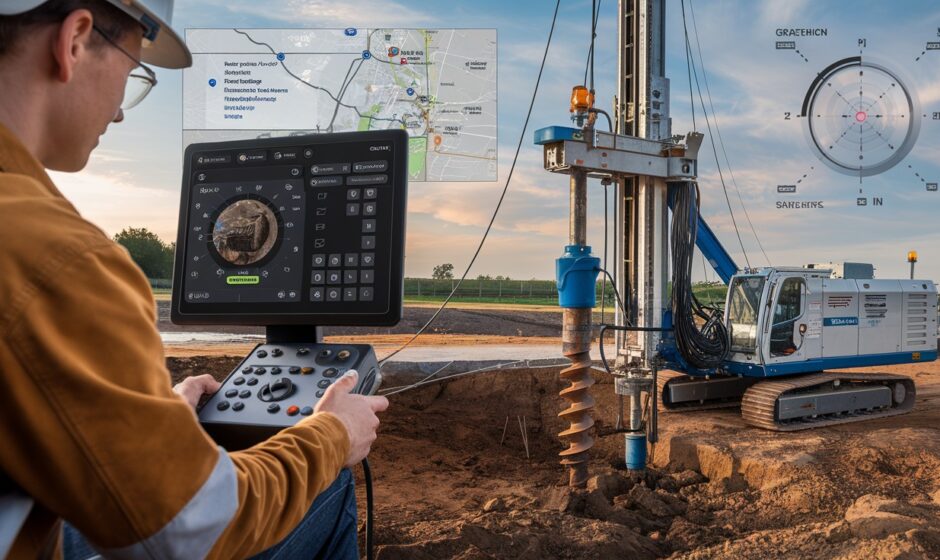Geotechnical engineering plays a critical role in civil engineering, focusing on the behavior of earth materials and their interactions with structures. In 2024, advancements in geotechnical engineering solutions are transforming the industry, making it more efficient and effective in addressing challenges related to soil, rock, and groundwater. This article explores the latest technologies that are shaping geotechnical engineering and how they can improve construction processes.
Advances in Soil Testing Methods
Traditional soil testing methods are essential for determining soil properties, but they can be time-consuming and labor-intensive. Recent developments in geotechnical engineering have introduced advanced soil testing techniques that provide faster and more accurate results. For instance, in-situ testing methods, such as cone penetration tests (CPT) and pressuremeter tests, allow engineers to assess soil properties directly on-site.
These advanced methods enable engineers to obtain real-time data, which is crucial for making informed decisions during construction. Additionally, non-destructive testing methods are gaining popularity, as they minimize disturbance to the soil while providing valuable information about its characteristics.
Use of Geographic Information Systems (GIS)
Geographic Information Systems (GIS) are becoming increasingly important in geotechnical engineering. These systems enable engineers to analyze and visualize spatial data, facilitating better decision-making in site selection and project planning. By integrating GIS with other technologies, such as remote sensing and 3D modeling, engineers can create comprehensive assessments of site conditions.
GIS allows for the evaluation of various factors that impact construction projects, such as soil stability, drainage patterns, and potential hazards. This information is vital for developing effective engineering solutions and mitigating risks associated with construction activities.
Smart Monitoring Systems
The implementation of smart monitoring systems is revolutionizing geotechnical engineering. These systems utilize sensors and IoT technology to collect real-time data on soil conditions, groundwater levels, and structural integrity. By continuously monitoring these parameters, engineers can detect potential issues before they escalate, ensuring the safety and longevity of structures.
For example, automated sensors can measure soil settlement, slope movement, and pore water pressure, providing valuable insights into the behavior of earth materials over time. This proactive approach to monitoring can significantly reduce the risks associated with construction projects and enhance overall project efficiency.
Advanced Modeling Software
In 2024, advanced modeling software is playing a crucial role in geotechnical engineering design and analysis. These tools allow engineers to create accurate simulations of soil-structure interactions, enabling them to evaluate the performance of structures under various conditions. By utilizing finite element analysis (FEA) and other modeling techniques, engineers can predict potential issues and optimize designs before construction begins.
Moreover, these software solutions facilitate collaboration among project stakeholders by providing a centralized platform for data sharing and analysis. This collaborative approach ensures that all parties involved in a construction project have access to the same information, reducing the likelihood of errors and improving communication.
Sustainable Practices in Geotechnical Engineering
Sustainability is a key focus in modern geotechnical engineering, and innovative technologies are enabling more environmentally friendly practices. For instance, the use of recycled materials in construction, such as reclaimed asphalt or crushed concrete, is becoming increasingly common. Engineers are exploring ways to incorporate these materials into geotechnical solutions, reducing waste and minimizing environmental impact.
Additionally, advanced techniques for soil stabilization, such as bioengineering and the use of geosynthetics, are gaining traction. These methods not only improve soil strength and stability but also promote sustainability by utilizing natural materials and reducing the need for traditional construction methods.
Integration of Artificial Intelligence and Machine Learning
The integration of artificial intelligence (AI) and machine learning in geotechnical engineering is transforming the way data is analyzed and interpreted. These technologies can process vast amounts of information quickly, identifying patterns and trends that may not be apparent through traditional analysis methods.
AI-driven predictive modeling can forecast soil behavior and assess potential risks associated with construction projects. By utilizing machine learning algorithms, engineers can improve their decision-making processes, leading to more effective geotechnical engineering solutions.
Future of Geotechnical Engineering
In 2024, the focus on sustainable practices and the incorporation of AI and machine learning will further enhance the efficiency and effectiveness of geotechnical engineering solutions. For businesses looking to navigate this dynamic landscape, collaborating with expert engineering companies will be crucial in leveraging these technologies and ensuring successful project outcomes.



